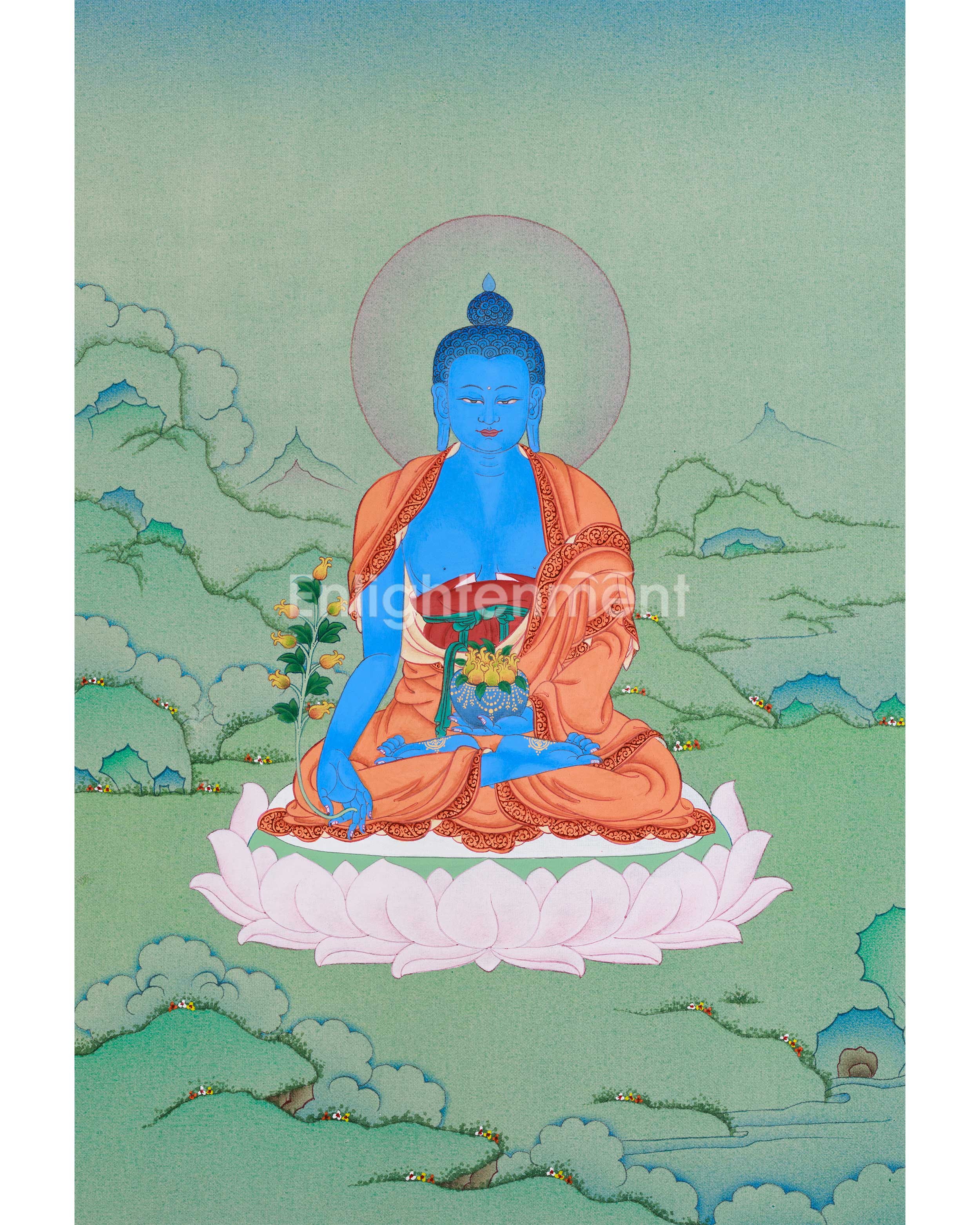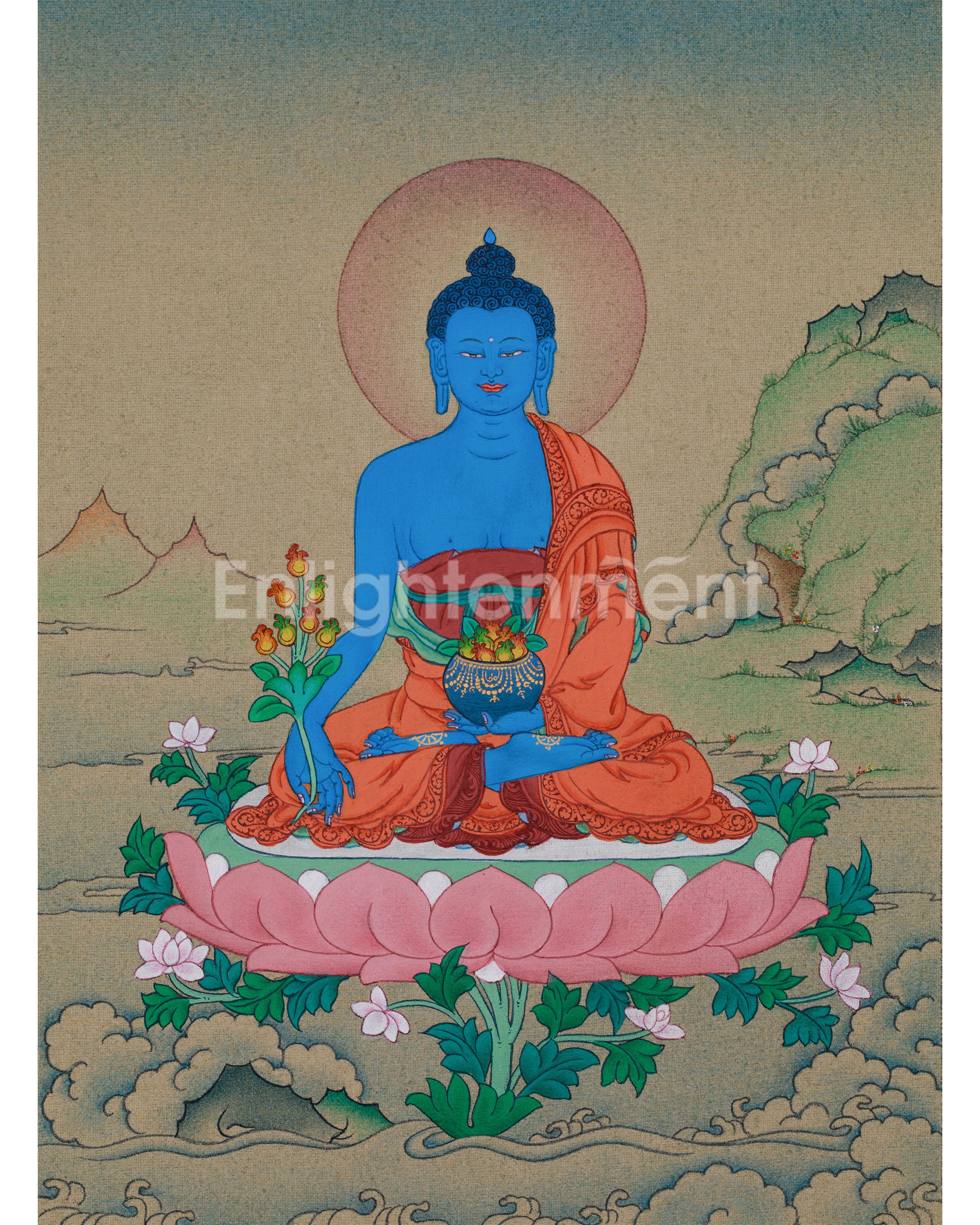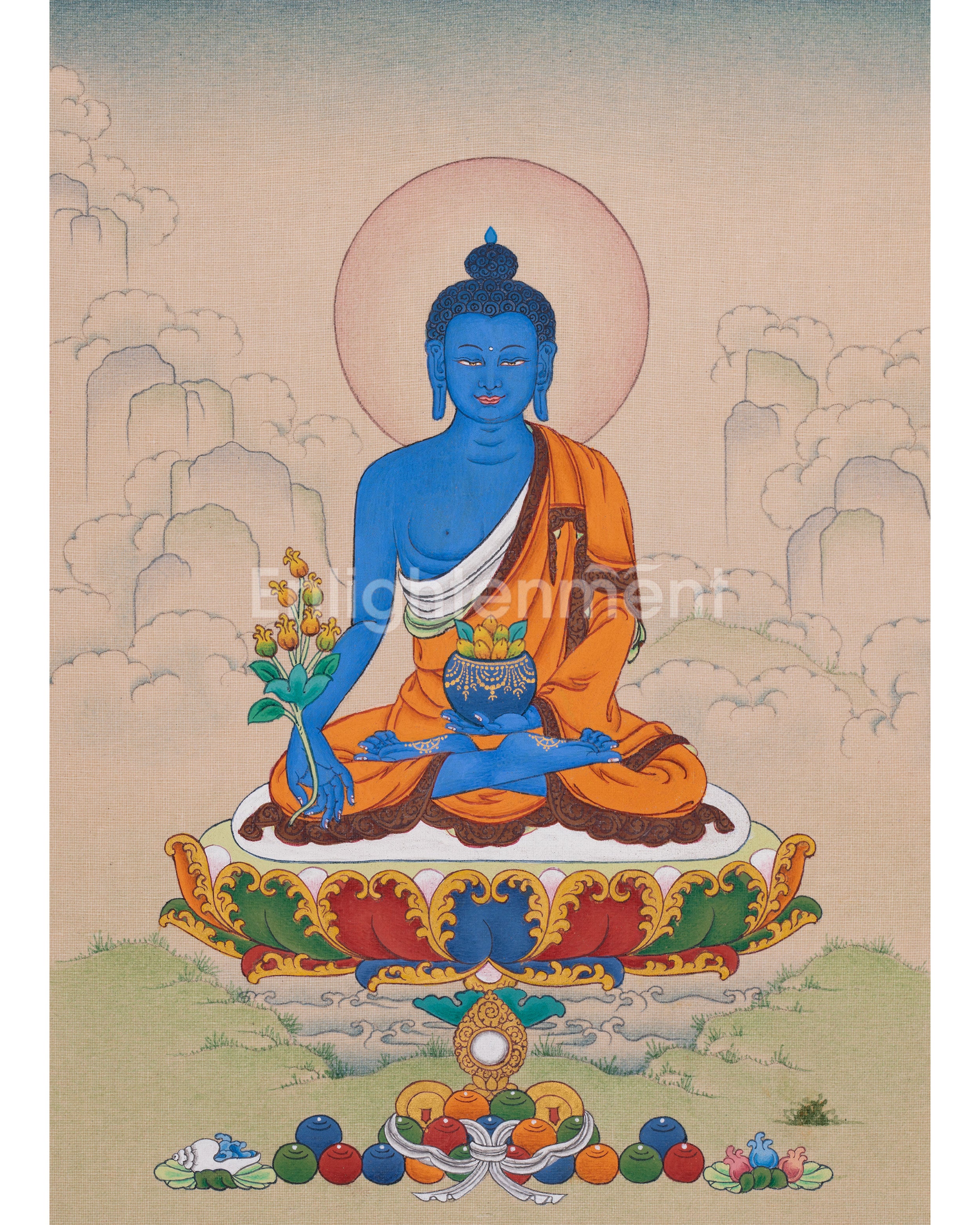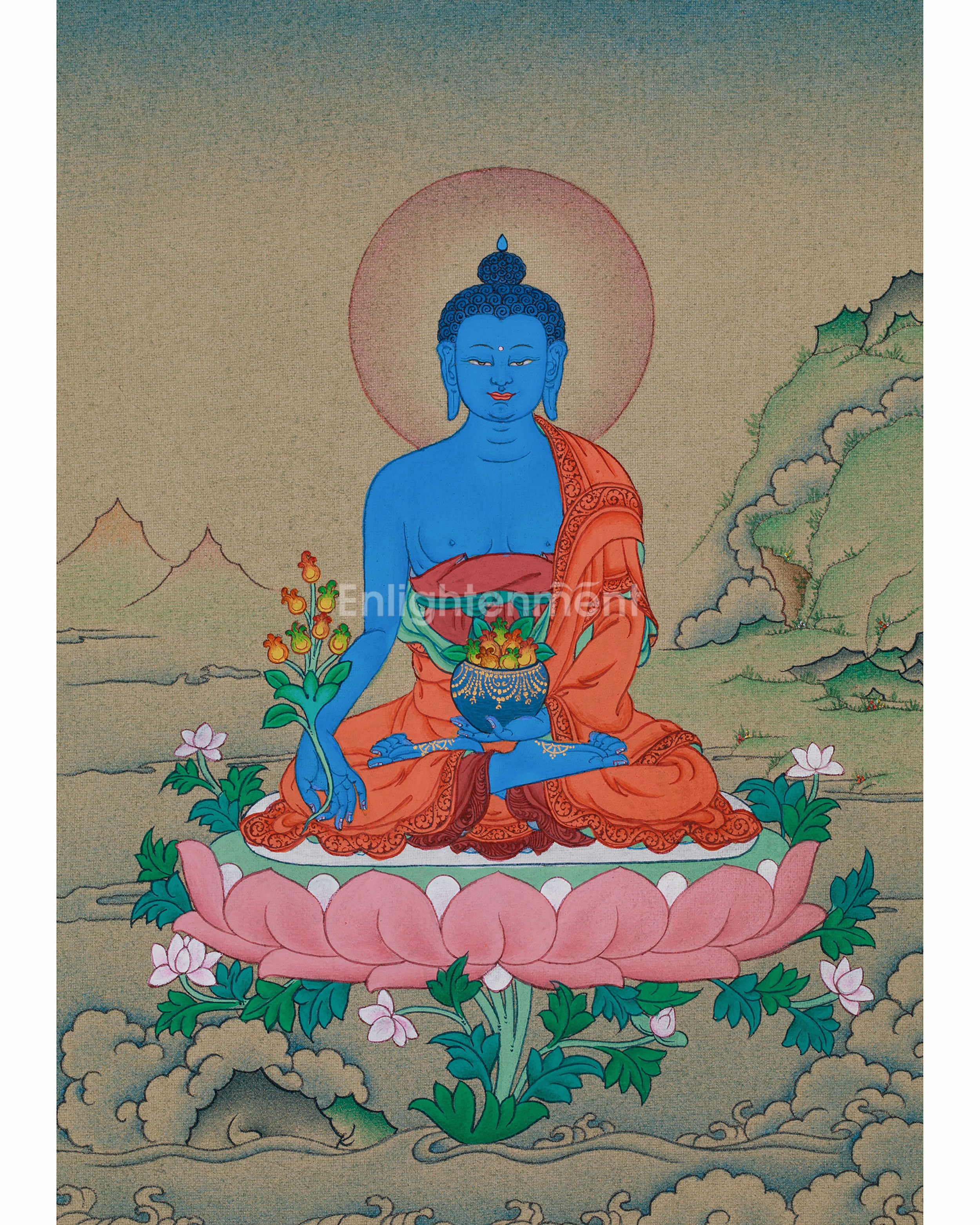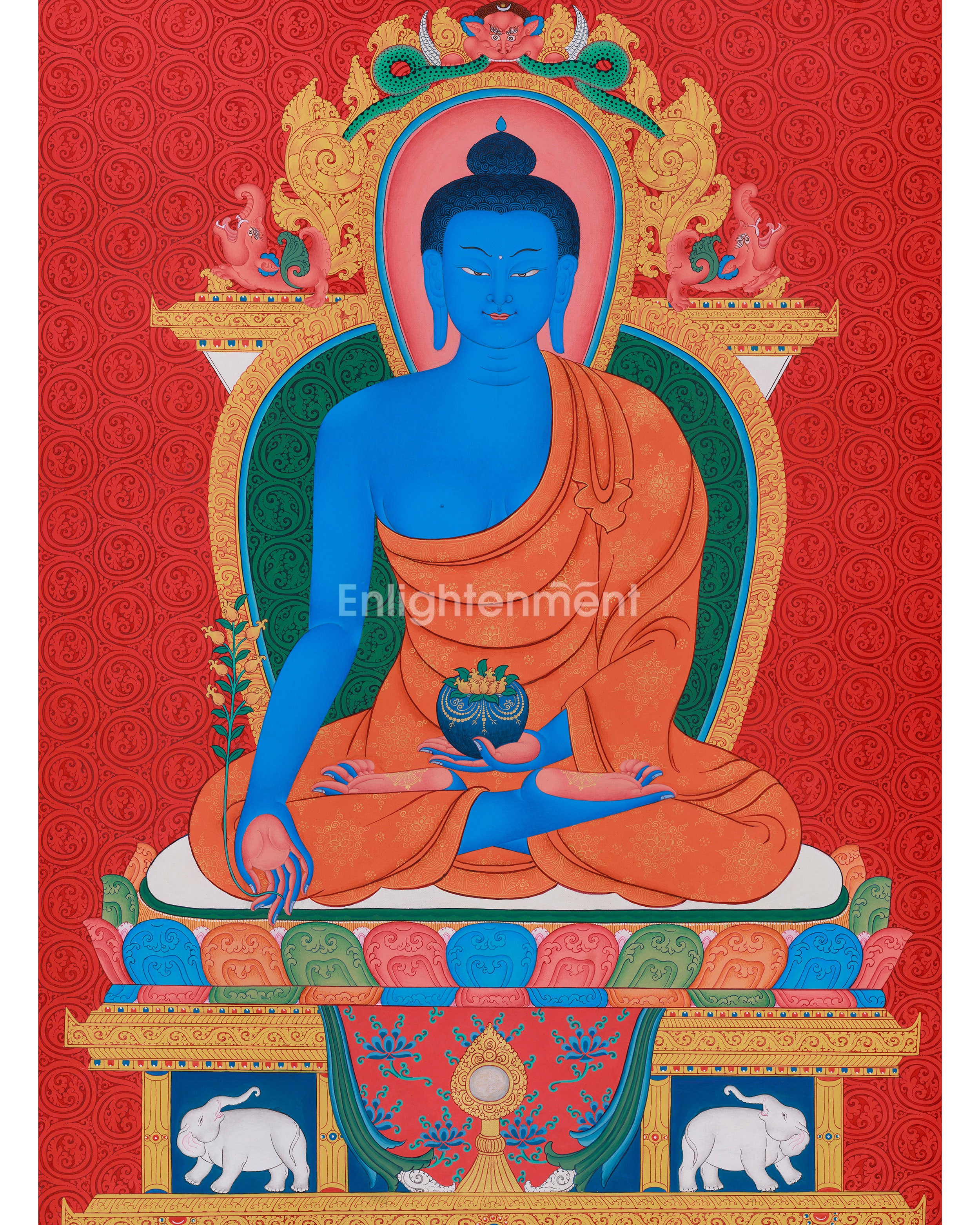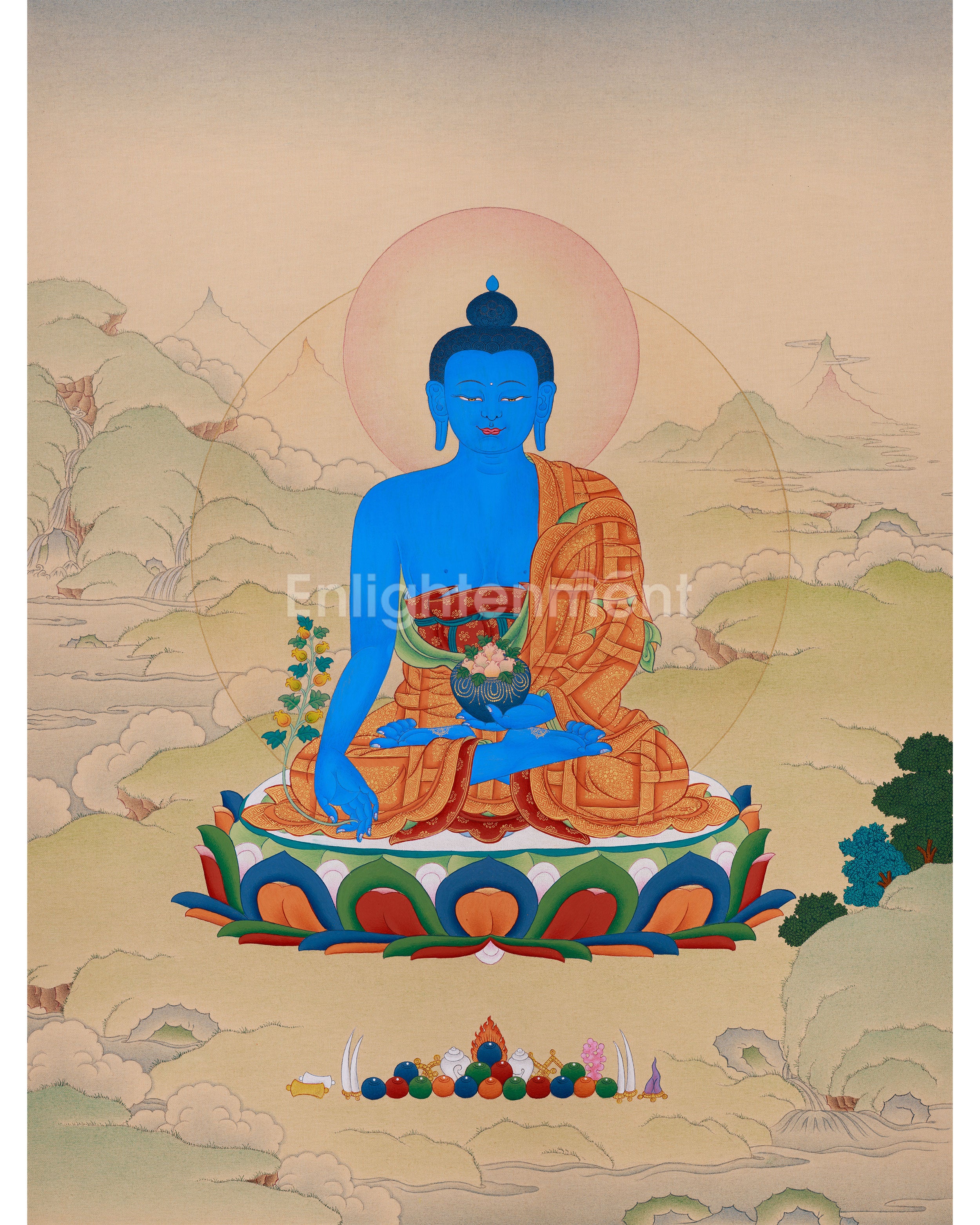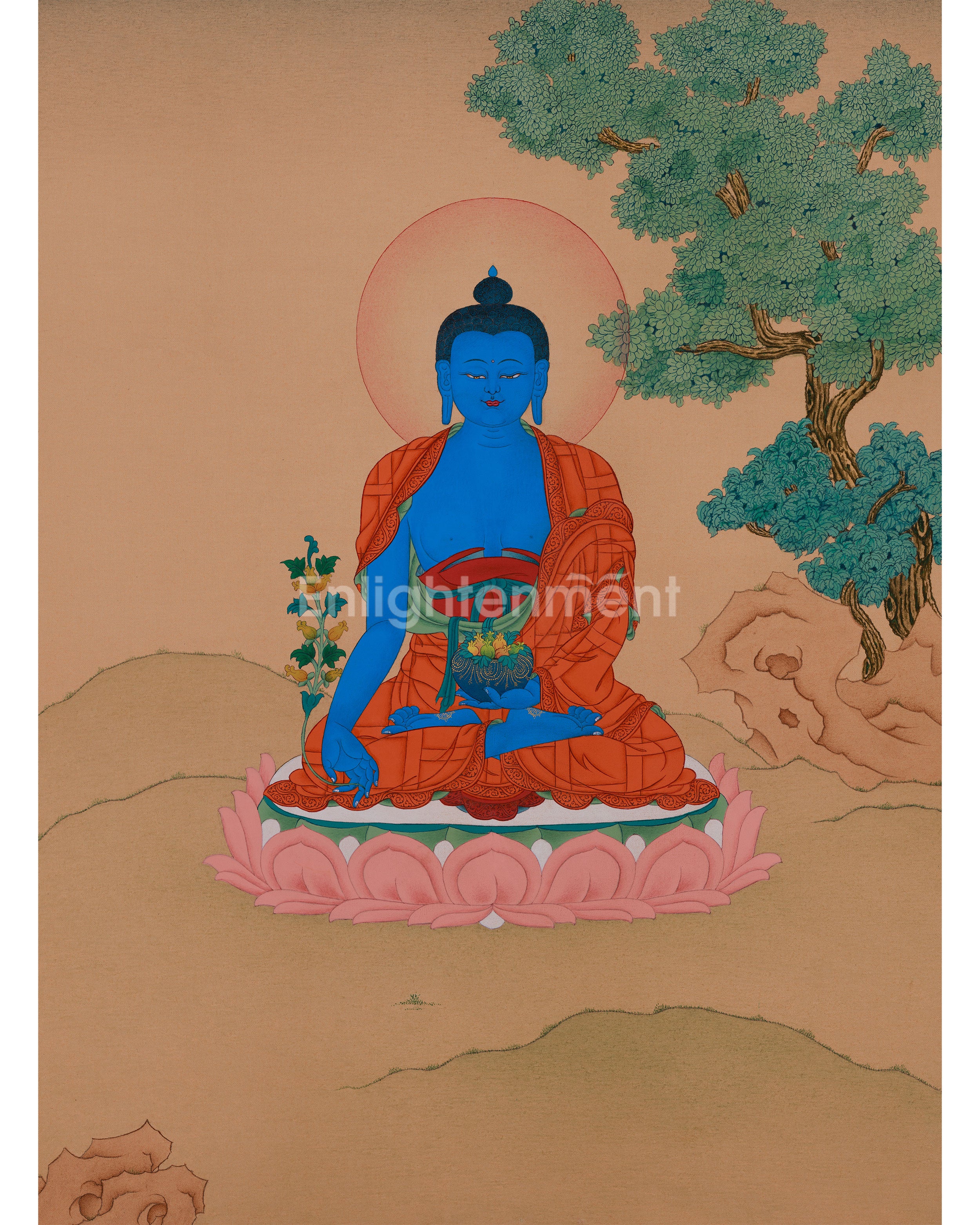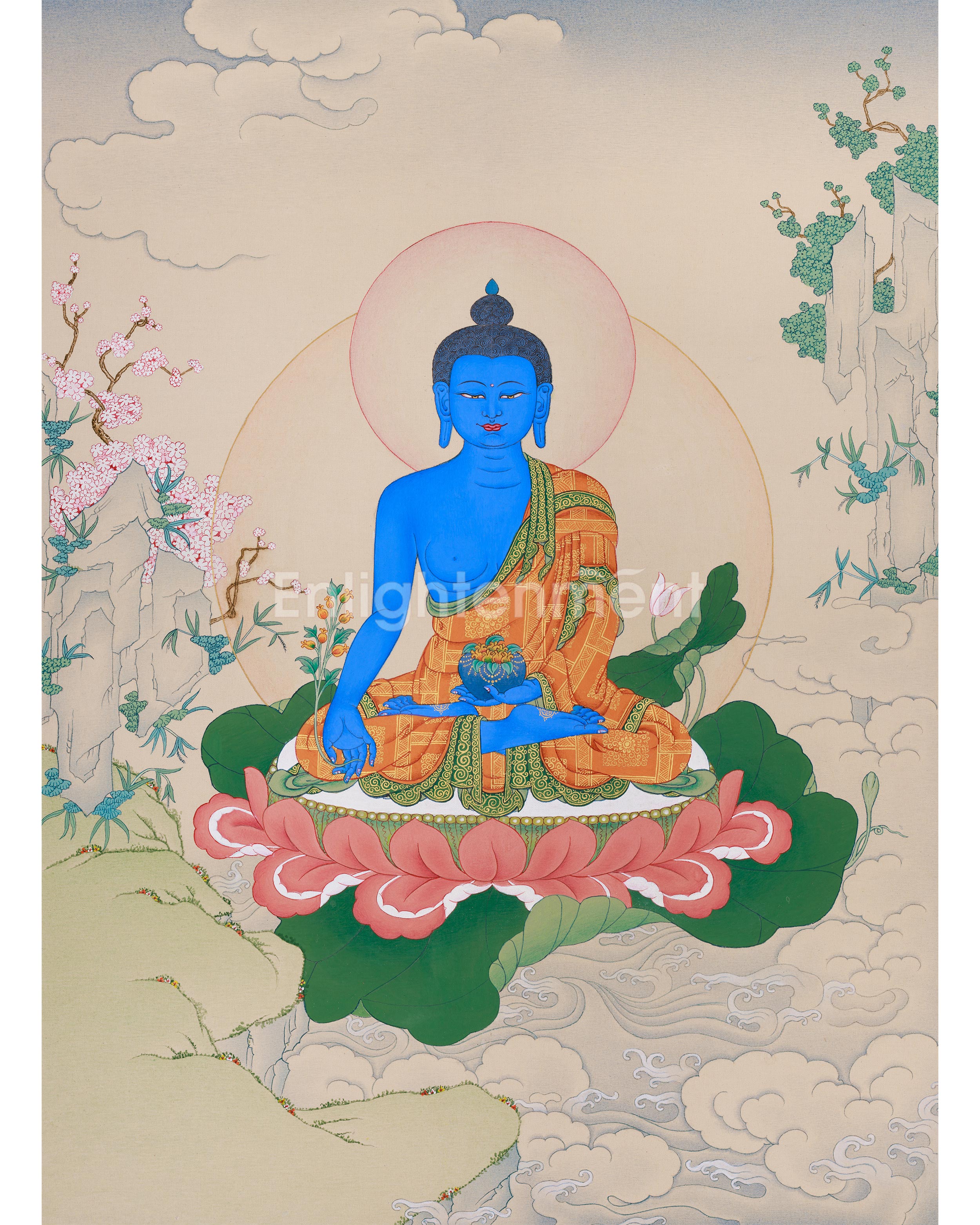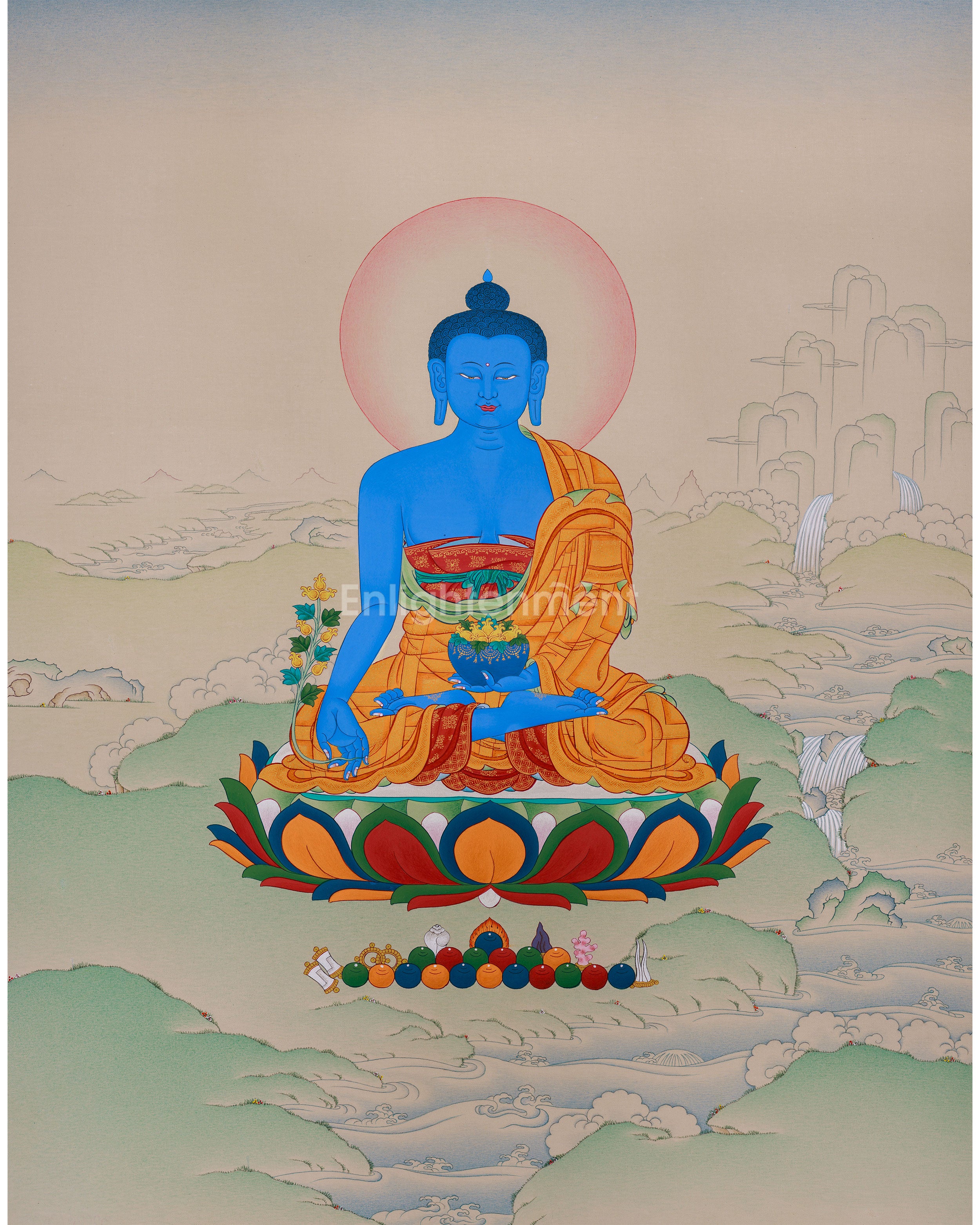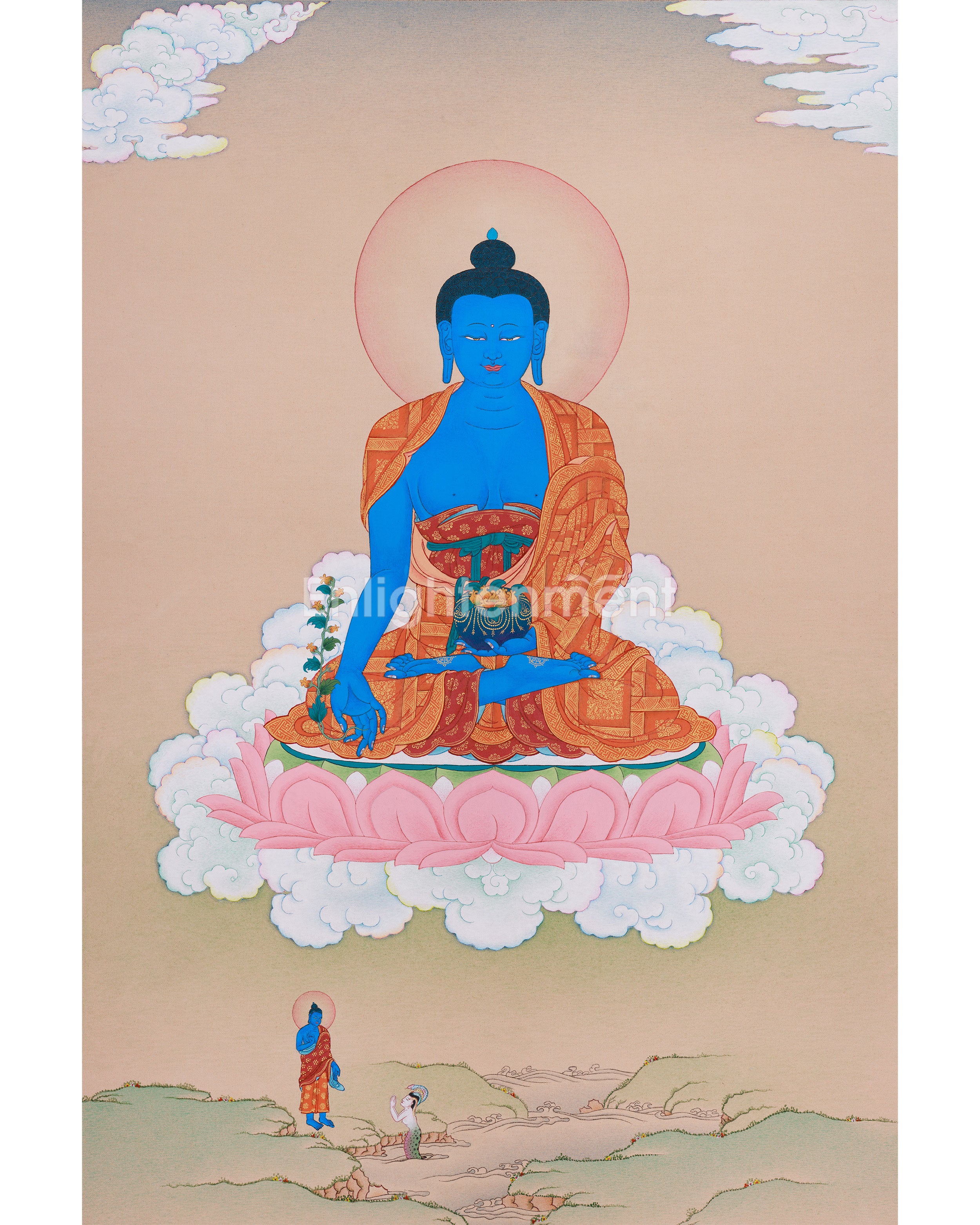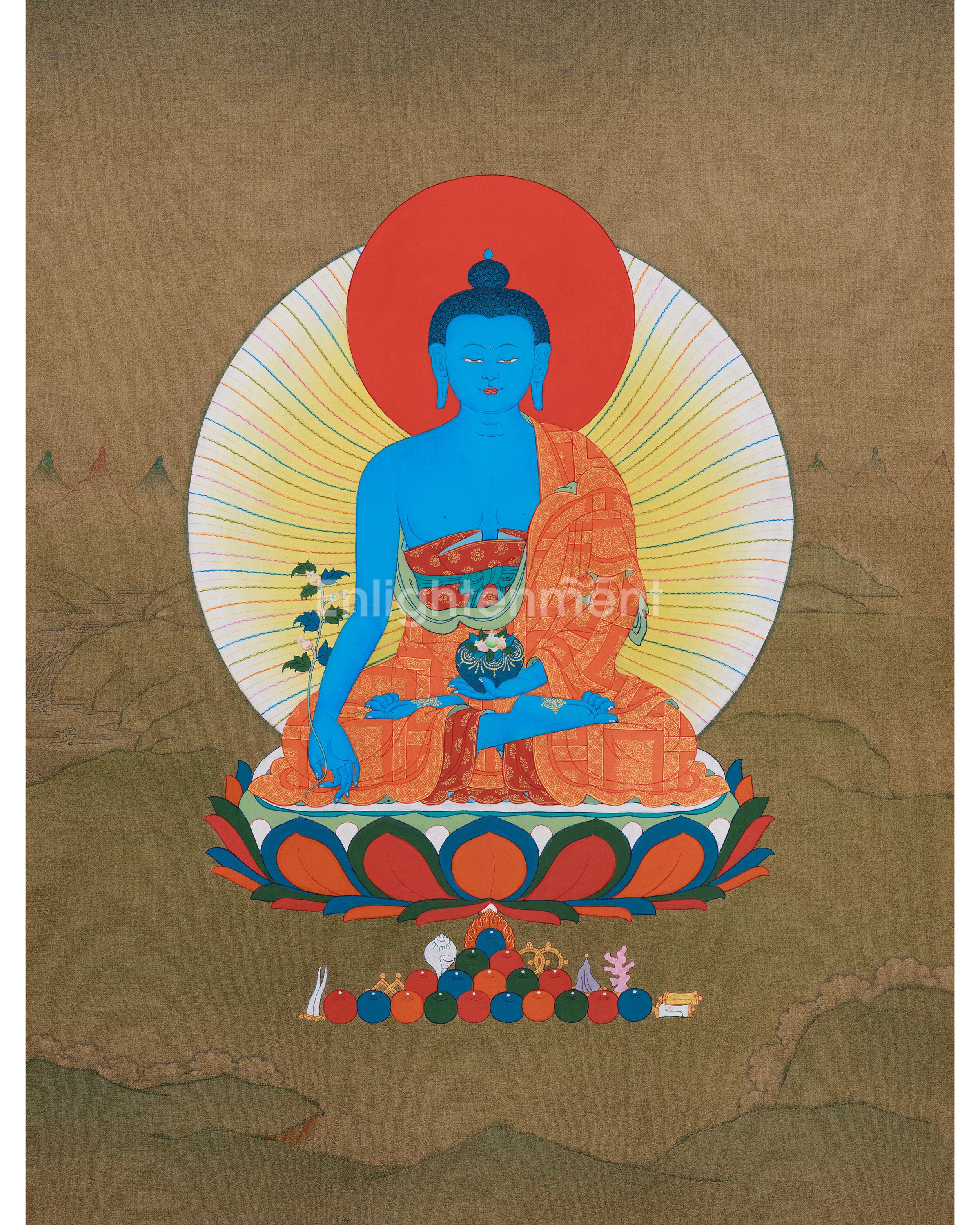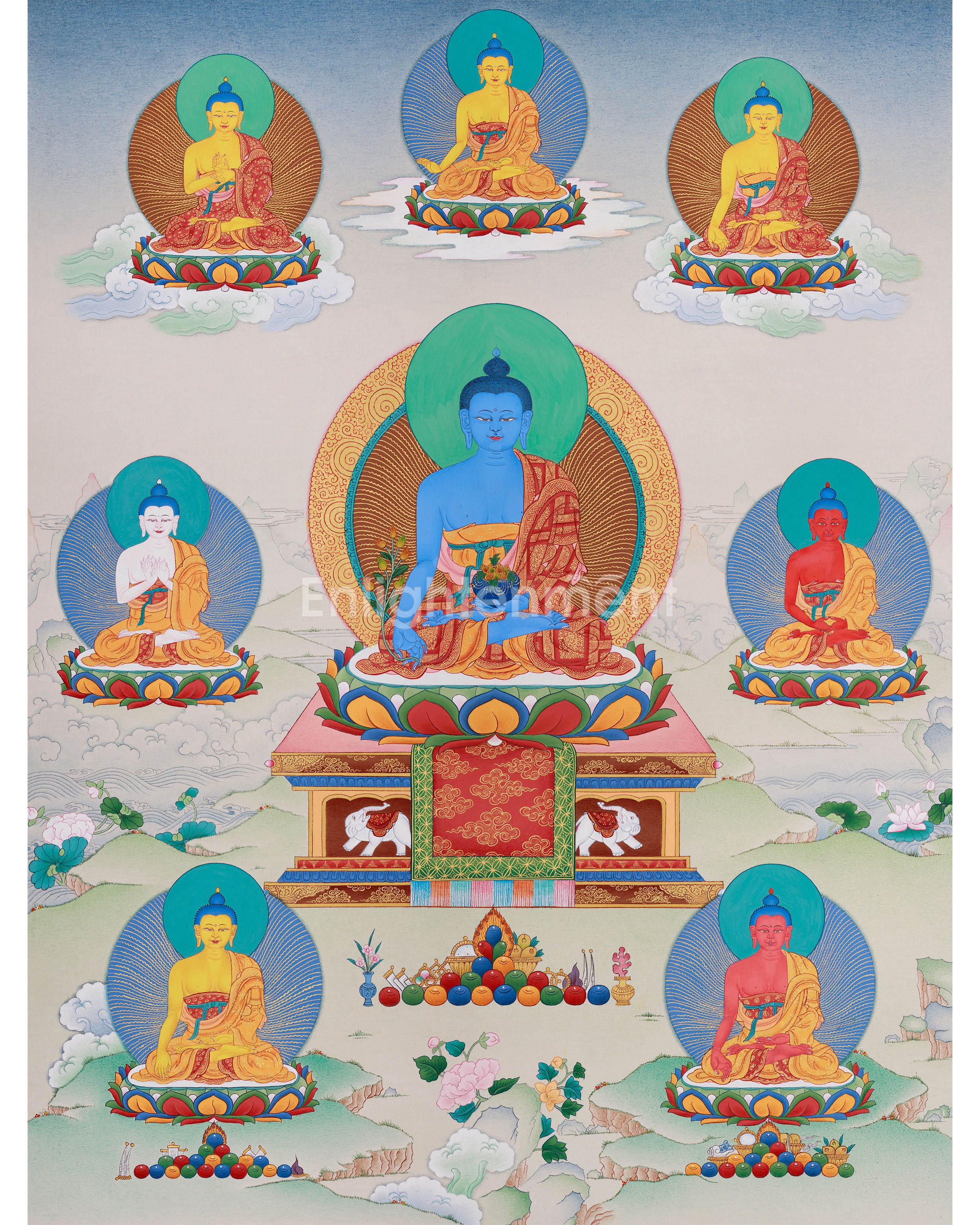Medicine Buddha
12 products
Showing 1 - 12 of 12 products
The Medicine Buddha gain their popularity as it is traditionally believed that these deities have the healing power of their blue shade, the Lapis Lazuli, and they are quite commonly collected and treasured in order to preserve good health. The Medicine Buddha thangkas exclusively use a fine shade of azure, neon, or in some cases, cornflower blue that both symbolizes its purpose and gives it a nice, aesthetic touch.
Healing Wisdom in Art: Medicine Buddha Thangka Collection
What is a Medicine Buddha Thangka?
A Medicine Buddha Thangka is a sacred depiction of Bhaisajyaguru, the Buddha of Healing and Medicine in Mahayana and Vajrayana Buddhism. These thangkas represent more than aesthetic beauty—they are revered as spiritual tools that support healing practices, meditation, and the cultivation of compassion.
Iconographic Details of Medicine Buddha
-
Color: Deep blue or lapis lazuli, symbolizing the power of healing and the vastness of the sky.
-
Right Hand: Extended downward in the mudra of generosity, holding the myrobalan plant—an ancient healing herb used in Tibetan medicine.
-
Left Hand: Rests in his lap in meditation mudra, holding a bowl of healing nectar (amrita) that eradicates suffering and disease.
-
Seated Posture: Calm and composed, representing meditative stability and unshakable healing wisdom.
-
Surroundings: Often surrounded by bodhisattvas or lineage masters, signifying his importance in both solitary practice and traditional rituals.
How Is a Medicine Buddha Thangka Helpful?
-
Promotes Healing: Hanging a Medicine Buddha thangka in a living or meditation space is believed to create a field of healing energy. It supports both physical and emotional well-being, especially when used alongside the recitation of the Medicine Buddha mantra.
-
Meditation Focus: It serves as a visual guide in healing meditations, helping practitioners to concentrate on the qualities of the Medicine Buddha: perfect health, deep compassion, and wisdom.
-
Spiritual Offering: It acts as a sacred offering to invoke blessings, particularly for those who are ill or undergoing emotional suffering.
-
Ritual Use: These thangkas are often used in Tibetan healing rituals, including prayer ceremonies for purification and longevity.
Why Choose Our Medicine Buddha Thangkas?
-
Authentic Materials: Hand-painted using natural stone pigments and 24K gold on handmade cotton canvas.
-
Traditional Styles: Available in both Karma Gadri & Menri Tibetan styles.
-
Spiritual Intent: Each thangka is crafted as a sacred offering, not just an art piece, making it ideal for genuine Dharma practitioners.
